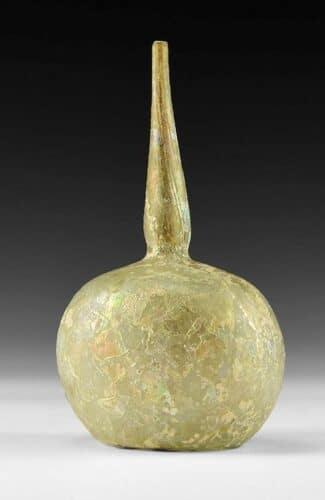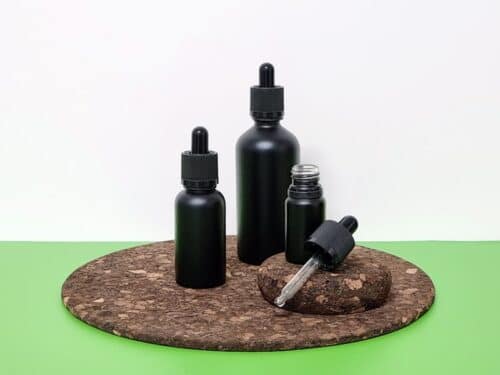The glass dropper bottle, we all know them, we all use them, but how much do we know about them?
The history of glass
The very first glass known to stone age people, was obsidian, black volcanic glass. Weapons and decorative objects were made from obsidian. The earliest known man-made glass dates back to around 3500BC. With finds in Egypt and Eastern Mesopotamia.
In the beginning glassmaking was slow and costly, it was a luxury item. Therefore, only a few people could afford it. The technique of glass blowing was discovered around the end of the 1st century. This was a revolutionary event in the history of glass making. Glass blowing was attributed to Syrian craftsmen, who used the technique of shaping molten glass by blowing into a blowpipe. The glass blowing made glass production easier, faster, and cheaper. This meant glass became available to ordinary citizens for the first time. Glass blowing tools and techniques have changed very little over the centuries and are still used today.
Mechanical technology for mass production began in the latter stages of the Industrial Revolution. It was Michael Owens`s invention of an automatic bottle blowing machine in 1903, which could produce 2500 bottles per hour.
Modern day methods of making glass products
Today creating glass containers can be accomplished by one of two different processes; the Blow and Blow, or the Press and Blow process. The type of glass bottle being made determines the process used. All glass bottles start out as raw materials. Silica (sand), soda ash, limestone, and cullet (furnace-ready, recycled glass). These are combined into a specific mixture based on the desired properties of the bottle. Thereafter, the mixture is melted at high temperatures in the furnace until it becomes a molten material, ready for formation. Known as soda-lime glass, it is the most popular glass for food and beverages.

Glass Dropper Bottles
A dropper, also known as a Pasteur pipette, or an eye dropper, is a device used to transfer small quantities of liquids. It was named after the scientist Louis Pasteur. He used a variant of them extensively during his research.
Louis Pasteur was a famous scientist who discovered and developed the concepts of vaccination, microbial fermentation, and pasteurisation. One benefit of the pipette is that the liquid being transferred remains uncontaminated as long as the pipette is clean. Today, pipettes come in both glass and plastic, but we know that we need to reduce plastic, so glass is best. The pipettes are sterilised and plugged with a polypropylene bulb at the open end of the pipette. Therefore, blocking contamination from the rest of the tube. Pipettes are generally considered to be disposable, however, they can be reused. Pipettes are commonly called an eyedropper and frequently come with dropper bottles.
Using dropper bottles
- Domestically: Many different types of liquid are stored and transferred using pipettes and dropper bottles. For example, transferring medicine, for use with eye drops, to store incense and essential oils, CBD, and many more.
- Scientifically: Researchers use pipettes and droppers to store chemicals and to transfer liquids, including some experimentation samples. The sterilised nature of the pipette and dropper bottle makes them ideal for experimentation because they will not contaminate whatever they hold or transfer.
- Medically: There are many medical applications for the pipette, including storing and transferring lab samples, medicine, solvents, and other chemicals. Made famous by its namesake, the Pasteur pipette or dropper and their bottles are just as important to science and medicine today as it was over 100 years ago.
Why our Dropper Bottles are perfect for CBD oils
Our tincture dropper bottles are low-volume bottles with a dropper cap which allows for precise dosing. Therefore, they are suitable for highly concentrated herbal or plant based extracts . They come with a child proof cap for safety and are covered with a matte black coating. This is important as most essential oils are light sensitive. In short, our matte black dropper bottles are perfect for CBD and essential oils.
References
https://www.oberk.com/packaging-crash-course/remarkable-history-of-glass
http://www.nissinkglass.co.uk/info/history-of-glass
https://www.oberk.com/packaging-crash-course/glass-bottle-formation

